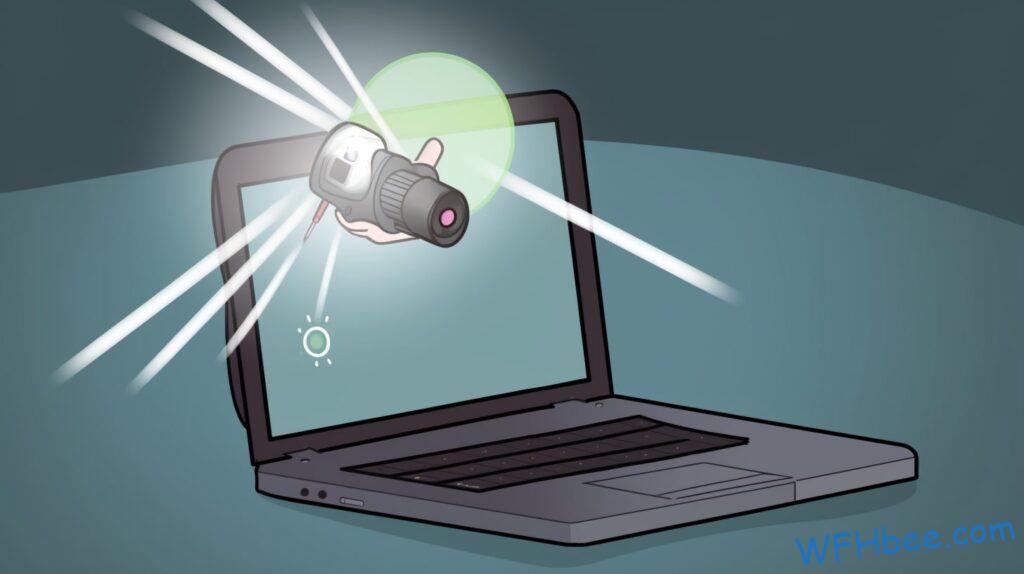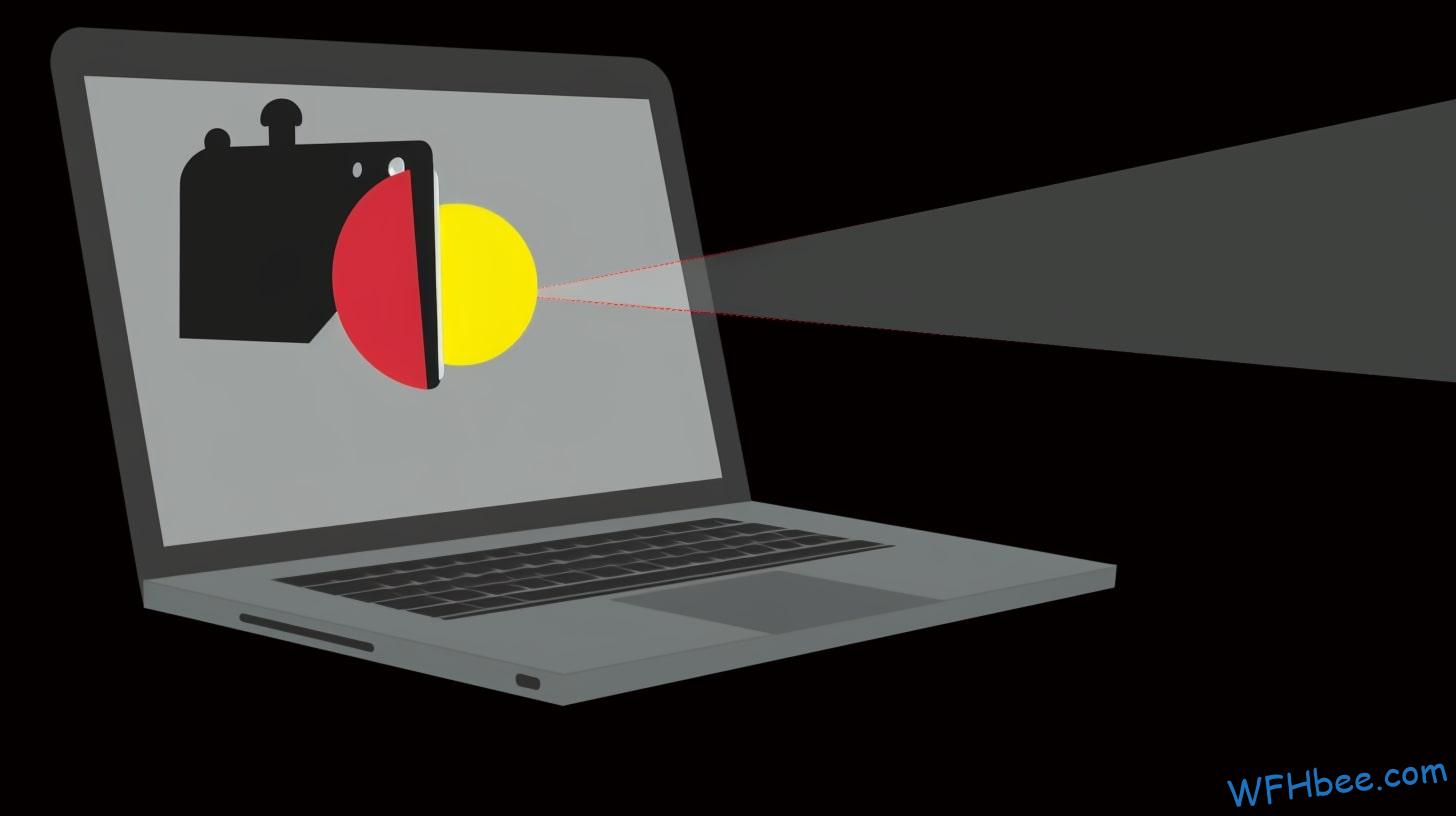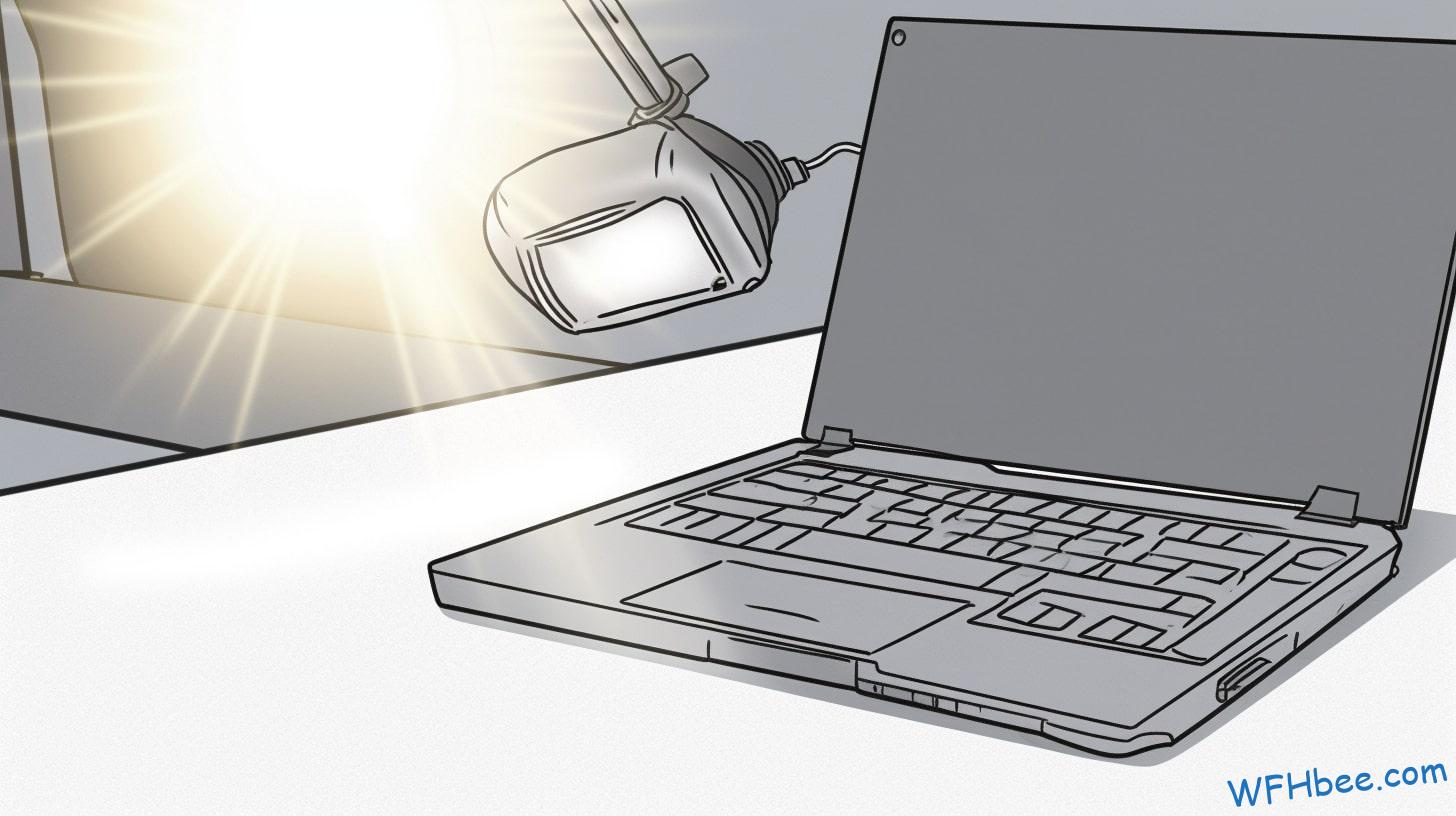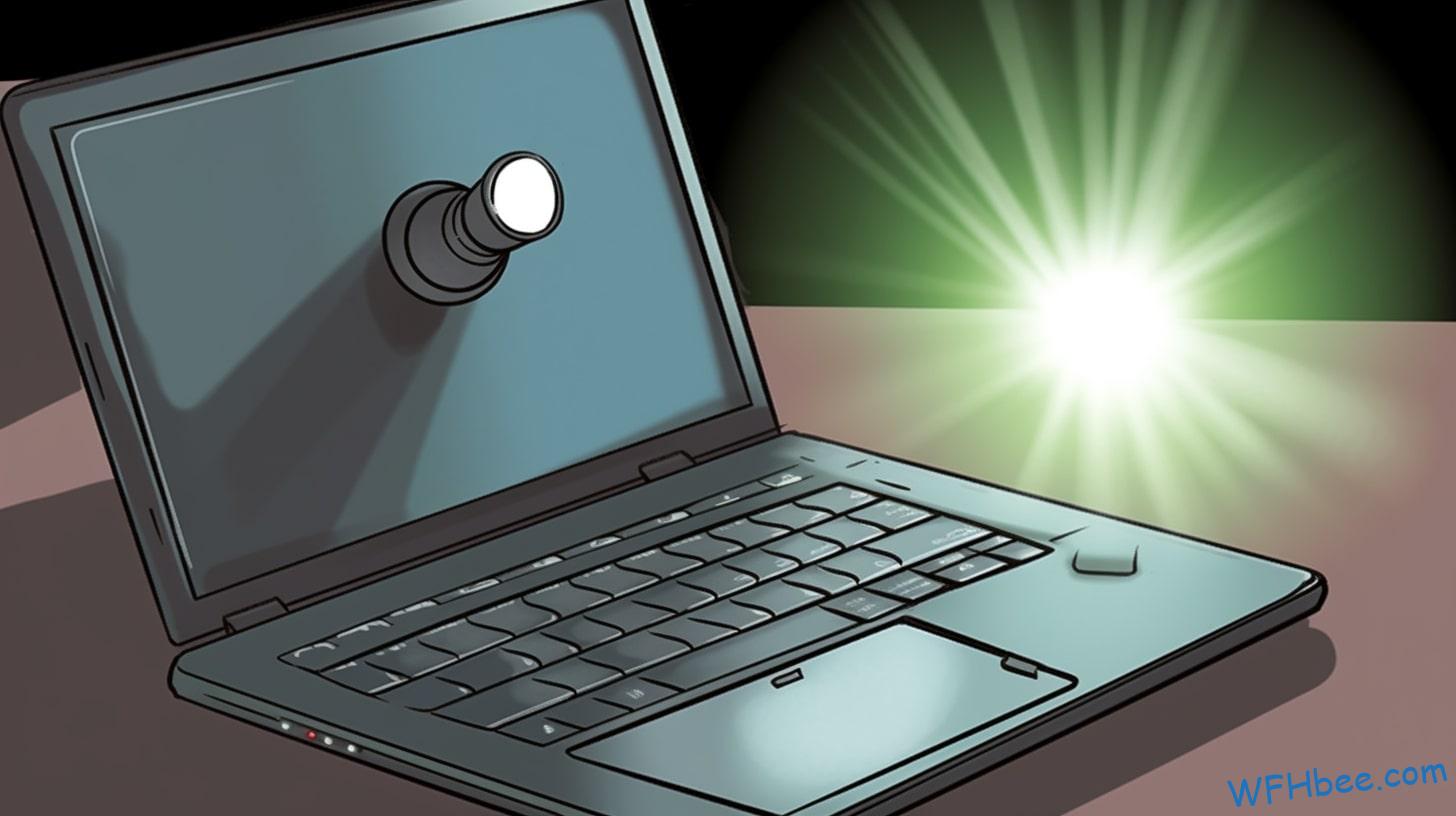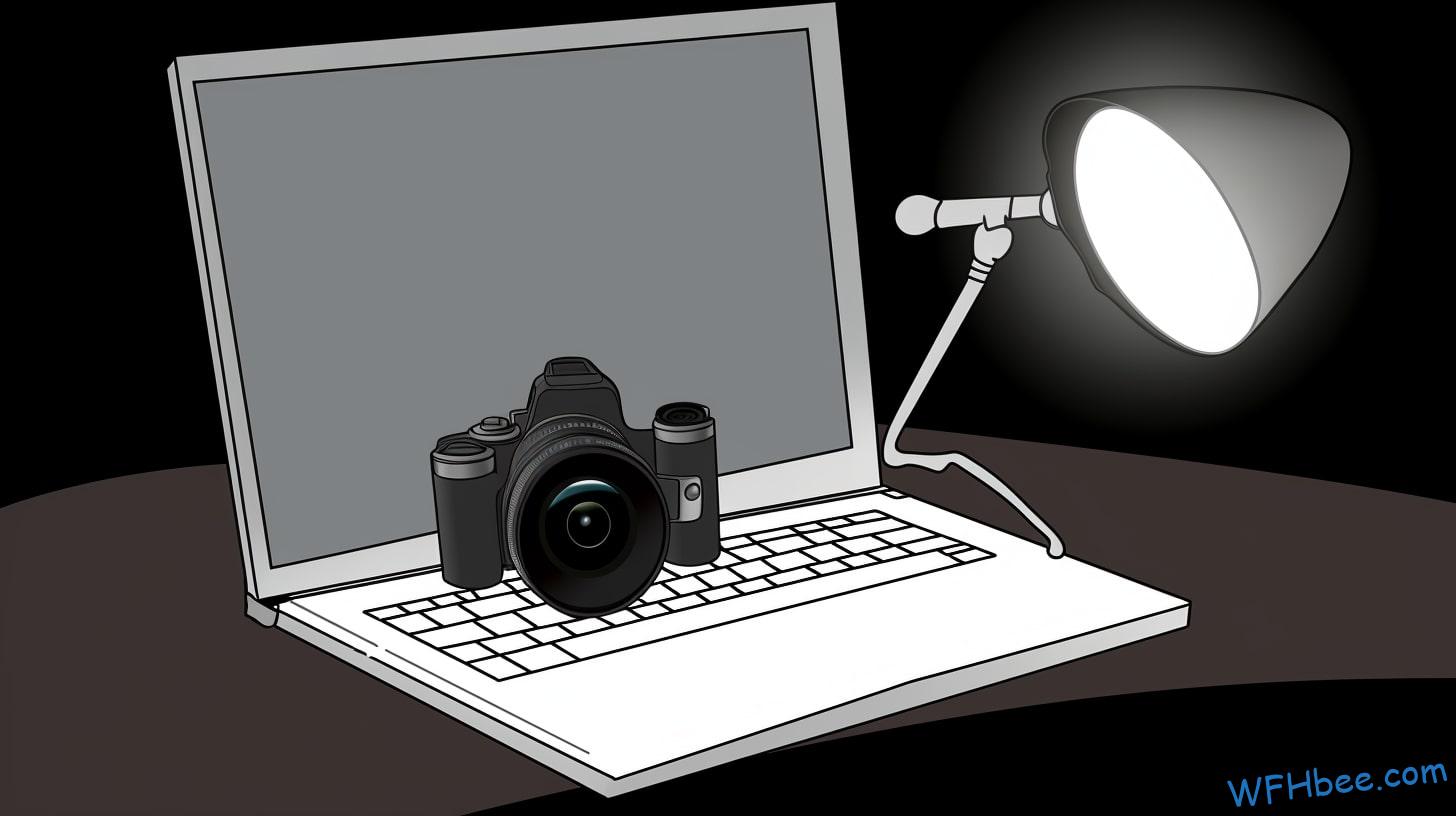Working from home has become increasingly common over the last decade, with many of us enjoying the freedom and autonomy that comes with it. But there is one aspect to working remotely that can be unsettling: Can my boss watch me on my laptop camera when I work from home? It’s an essential question for anyone employed in a remote role, as your privacy could potentially be at risk. In this article, we’ll look into how to protect yourself from surveillance while still meeting all of your employer’s expectations.
The idea of someone watching you without you knowing or having any control over it can understandably feel uncomfortable. You may think that employers aren’t allowed to do this kind of thing but actually, they might have more power than you realize. Employers are able to track their employees’ activity online, including using their webcam and microphone, even if they don’t tell them about it. This means that some bosses could be watching their employees when they’re not aware – and this is where things get worrying.
It’s understandable why people would be concerned about being monitored while they work from home – after all, no-one should feel like they are under constant surveillance in order to do their job properly! Fortunately though, there are ways to make sure your employer isn’t secretly monitoring your movements while you work remotely; meaning you can enjoy the freedom associated with working away from the office without feeling like Big Brother is always looking over your shoulder. Read on to find out how…
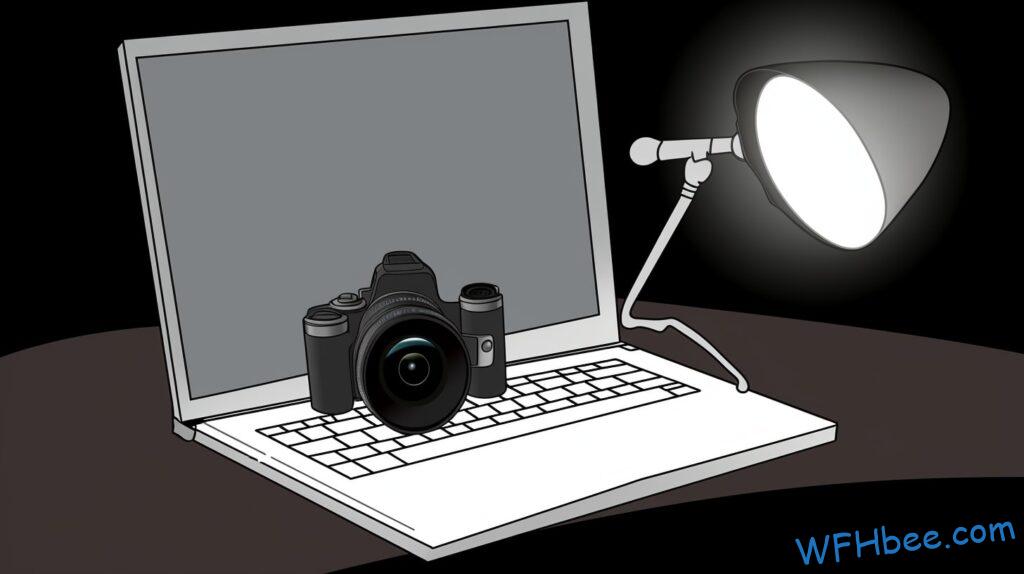
Table of Contents

Definition Of Employer Surveillance
Surveillance of employees by their employers has been on the rise in recent years. According to a 2020 survey, 43% of businesses engage in some form of employee monitoring. But what does employer surveillance mean?
Employer surveillance is when an organization keeps track and monitors their employees’ activities either inside or outside the office. This can include tracking emails, phone calls, computer usage or video surveillance of workstations. Employers may also use keystroke logging software to observe how quickly tasks are being completed and if certain applications are used for long periods of time.
In terms of remote working scenarios, this could look like employers using online conferencing tools such as Skype or Zoom to watch their employees during virtual meetings. It could also involve checking up on workers through webcam footage while they’re working from home. As technology advances and more companies move towards digital solutions, it becomes easier for employers to monitor their staff without having physical access to them. With this in mind, understanding the legality surrounding these practices is essential for both employers and employees alike.
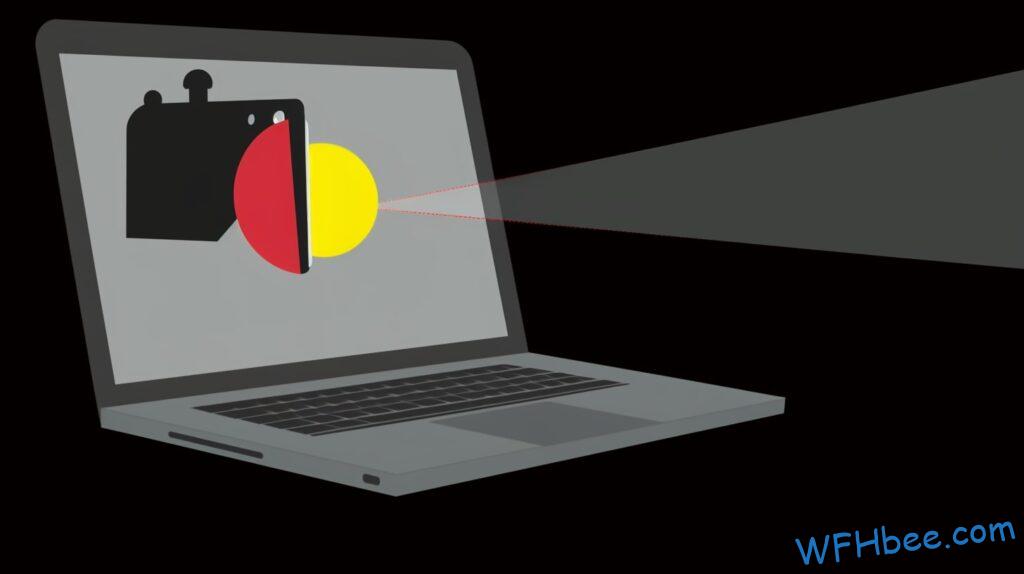
Legality Of Employer Surveillance
Legality surrounding employer surveillance is complex, and can vary by country and state, so make sure you check the specific regulations in your region. For example, each US state has its own workplace surveillance regulations, and employers must abide by the laws in their jurisdiction. Generally speaking, though, employers are allowed to monitor employees while they work remotely, as long as it’s done within certain parameters and with sufficient notification.
In terms of employee monitoring legality, employers may be able to watch an employee on a laptop camera if they provide prior notice to the employee about being monitored. Employers should also clarify what type of monitoring is permitted and try to limit it to business-related activities only. Additionally, any recordings or communications gathered from remote working should remain private and not be used for disciplinary action or other purposes beyond proper management oversight.
Employers must comply with local laws regarding electronic communication rights when engaging in workplace surveillance. Some states have specific rules that protect employees’ privacy even more so than federal law does; thus businesses should stay informed of applicable laws where they operate before attempting any kind of surveillance activity related to their staff who are working remotely. This ensures that both parties understand their respective rights and obligations in regards to employee monitoring during telework scenarios.
Company policies play a key role in determining how much control an employer can exercise over employees while they’re offsite – these policies will dictate which types of data can be collected through remote worker surveillance efforts. Understanding such company procedures helps ensure compliance with relevant legislation and allows workers to feel safe knowing their personal information remains secure during virtual operations.

Company Policies On Employee Monitoring
Your boss may have the legal right to monitor you while you work from home, but this does not necessarily mean that they do. It is important for employers and employees alike to understand company policies on employee monitoring, as well as applicable laws concerning surveillance and privacy regulations.
Employers must follow certain guidelines when it comes to monitoring their staff in order to protect individual rights and avoid any potential litigation. Generally speaking, employers should only use monitoring techniques if there is a legitimate business need or interest in doing so. This type of activity should also be discussed with all relevant parties beforehand and agreed upon by both sides. In addition, employers are obligated to inform employees in advance about what types of activities will be monitored such as computer usage, email communication, phone calls etc., as well as how long the data will be stored for record-keeping purposes.
In terms of employee privacy regulations, companies must adhere to local jurisdiction laws regarding workplace surveillance or face possible fines or penalties imposed by authorities. Knowing your rights and understanding company policies can help ensure that you are treated fairly and your basic rights are respected even when working from home – something we all strive for. As the next section discusses potential risks associated with video camera monitoring at home, it’s important for everyone involved to take these precautions into consideration before implementing procedures like webcam supervision.
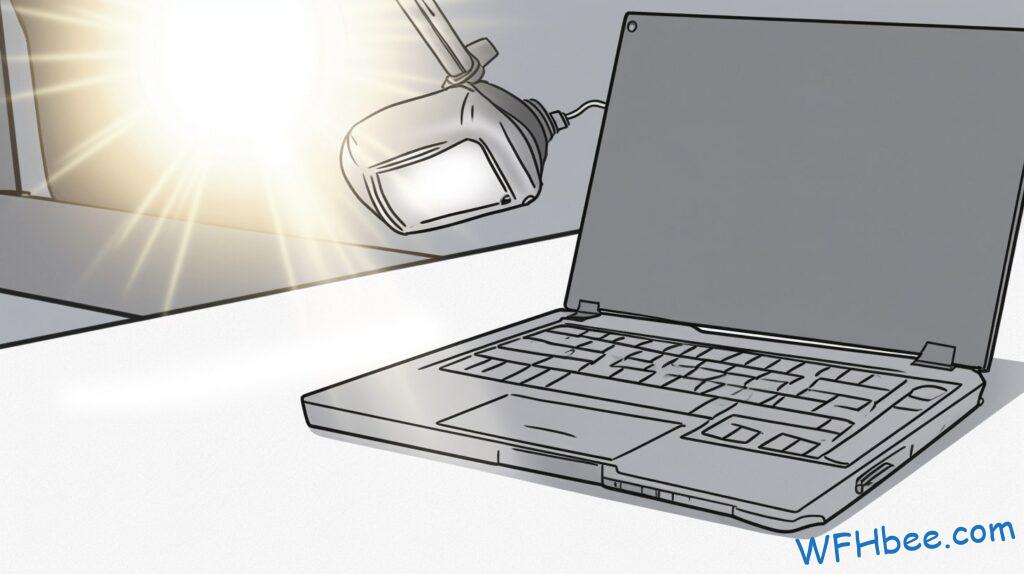
Potential Risks Of Monitoring Employees At Home
The potential risks of monitoring employees at home are numerous. Firstly, workplace surveillance can be a violation of employee privacy if it is carried out without their consent or knowledge. This means that employers could have unauthorized access to personal information and data about the employee’s activities which may not necessarily be relevant to the job they’re doing. Furthermore, tracking software installed on laptops used for remote working may also compromise an employee’s online security by collecting sensitive information from their computer.
Another risk associated with remote work monitoring is that it reduces the level of trust between employer and employee as there exists an imbalance in power when one party is constantly surveilling and scrutinizing another’s actions. In addition, any attempts to micromanage an employee via intrusive surveillance techniques such as keystroke logging or video recording can create feelings of being watched, judged and disrespected leading to decreased motivation within the workforce.
Lastly, even though technology has made it easier than ever before for employers to track their staff while working remotely, this doesn’t mean that all companies should take advantage of these tools available to them. After all, what good would come from spying on your own employees? A better approach would be for managers to foster open communication and trust amongst their teams so everyone feels respected and appreciated regardless of where they choose to carry out their duties. With that said, let’s now look at some of the types of technology used to monitor employees at home.

Types Of Technology Used To Monitor Employees At Home
Despite the potential risks of monitoring employees at home, employers are increasingly using technology to do so. According to a recent survey conducted by Stanford University, 65% of employers view employee surveillance as an essential element in protecting their business operations. Here is a list of types of technology used for remote monitoring:
- Employee Monitoring Software – this type of software allows employers to track activities such as emails sent and websites visited on company computers.
- Video Surveillance Systems – these systems can be set up with cameras that allow employers to observe what is happening in their workspaces remotely.
- Remote Tracking Apps – these apps enable employers to monitor employee work time and location, among other things.
Due to advances in technology, it has become easier for employers to keep tabs on their employees without them even knowing about it. This leaves workers feeling anxious and uncertain about how much control they have over their own privacy while working from home. The next section will discuss symptoms that may indicate an employee is being monitored remotely by their employer.

Symptoms That An Employee Is Being Monitored Remotely
Being monitored remotely can feel like a violation of one’s privacy, so it’s important for employees to be aware of the warning signs. While employers have every right to monitor employee behavior and productivity, it should not come at the cost of violating their employee’s sense of safety and security. Signs that an employer may be monitoring an employee include:
First, suspicious emails or messages from the employer asking about activities during specific times. The message may appear as though they saw something online that raised suspicions regarding activity while working from home. Second, there might be more frequent requests for updates on progress than usual. Employers may also require detailed reports on work done throughout the day instead of just weekly summaries. Third, if computers are provided by the employer, then any changes made without notice is a sign of possible remote surveillance. This includes new software installed or sudden pop-ups appearing when using certain applications.
Employees who suspect monitoring should take steps to protect themselves against potential violations of their privacy rights. Being aware of these symptoms can help people understand their expectations while working from home and where to draw the line in terms acceptable workplace practices versus unacceptable ones.

Privacy Expectations When Working From Home
Drawing a line in the sand is essential when it comes to privacy expectations when working from home. The reality is, without clear guidelines and boundaries set by employers, remote employees might feel they are constantly under surveillance – even if their boss isn’t actually watching. This can be an uncomfortable feeling that affects job performance and morale.
So what should employers do? First of all, make sure everyone knows exactly what’s expected of them while working remotely. Set rules about video conference calls or screen sharing during meetings, clearly communicate any security protocols you have in place, and establish explicit guidelines on how employee data will be collected and handled. It’s also important to provide employees with support for managing their workloads effectively so they don’t become overwhelmed or overworked.
At the same time, it’s essential to recognize the need for personal space and autonomy among remote workers. Don’t forget to give them breaks throughout the day and encourage healthy work-life balance habits like taking regular walks outside or scheduling social activities with coworkers. Doing this will help create an atmosphere where your team feels safe enough to open up about issues related to being monitored remotely or having concerns about digital security measures at work. By creating these safety nets, you’ll foster trust between yourself and your staff – allowing both sides to benefit from the advantages of working from home while still protecting their privacy.
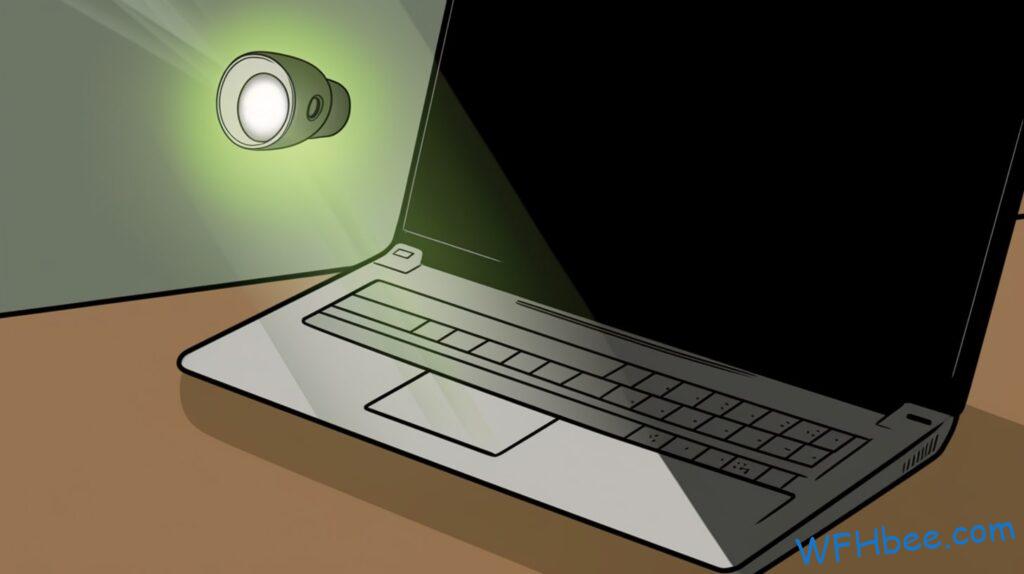
Strategies To Protect Your Privacy When Working From Home
Privacy is a fundamental right, yet in the digital age it can be hard to maintain these rights when working from home. As technology advances, devices like laptop cameras have become increasingly easy for someone else to access remotely. So if your boss has raised concerns about you using your laptop camera while at home, there are strategies that you can take to protect your privacy.
One of the most effective methods for protecting yourself against any potential surveillance is by covering up or disabling your webcam and microphone on your device. This will prevent anyone from being able to watch or listen into what’s happening in your home office without permission. It may also be beneficial to install reputable antivirus software onto your device as this helps ward off attempts at remote access.
Another way of ensuring greater peace of mind is through making use of virtual private networks (VPNs). VPNs act as an encrypted tunnel between two points on the internet, thereby helping keep data secure throughout its transmission over the web – especially helpful when sending confidential documents such as financial information or personal records back and forth with clients or colleagues.
Taking simple steps such as these can help restore some sense of control in knowing that no one besides those who have been granted direct access are watching or listening-in to what goes on within the boundaries of your own home office space – allowing you to work freely and securely in today’s digital world. With increased security measures now taken care of, let’s move onto discussing ways you can safeguard even further with additional security measures for your laptop itself…

Security Measures To Take With Your Laptop
Do you ever feel like someone is watching your every move while working from home? Well, don’t worry – chances are it’s just your boss! In today’s world of high tech surveillance and data privacy laws, it can be easy to forget that the most basic form of tracking comes down to an old fashioned webcam.
Thankfully, there are a few simple security measures you can take to protect yourself:
- Use laptop encryption software to protect all of your files.
- Invest in a webcam cover so no one can see what you’re doing.
- Make sure your data is backed up securely on an external hard drive or cloud service.
With these tools at hand, you’ll have peace of mind knowing that any unwanted eyes won’t be able to monitor your activities when working from home. And if you do suspect unauthorized access or tracking software on your computer, the next section will provide tips for detecting it quickly and efficiently.

How To Spot Unauthorized Access Or Tracking Software
When working from home, one of the most important security measures you can take is to be aware of any unauthorized access or tracking software that may have been installed on your computer. This type of malicious software could allow someone to monitor and track your activities when using a laptop remotely. It’s essential to know how to spot signs of this kind of activity as it can leave you vulnerable to data breaches and other cyber-crimes.
The first sign that something might not be right is if you notice strange behavior with certain programs running in the background while others are inactive. If you see multiple processes running at once or programs launching even when they weren’t previously open, then this could indicate someone else has control over your device. Additionally, look out for unexpected popups asking for personal information such as usernames and passwords which could mean malware has been installed without your knowledge.
It’s also worthwhile scanning through all the computer settings regularly just in case anything suspicious appears there too. Look into system updates, active services and any unfamiliar files which could suggest third party interference with your laptop’s operations. If you find something questionable, don’t hesitate to contact an IT specialist who will be able to investigate further and help protect your machine from potential threats like remote monitoring tools.
Having awareness about these types of risks allows people the opportunity to proactively safeguard their computers against outside intrusions. With this knowledge comes more power – power over our digital lives so we can work securely from home worry-free knowing we won’t fall victim to unwanted surveillance or malicious attacks targeting our devices.

What To Do If You Suspect You Are Being Monitored Remotely
If you suspect that your boss is monitoring your laptop remotely, there are a few steps you can take to protect yourself. Firstly, be aware of the signs of remote employee monitoring. Look out for any suspicious activity on your computer such as programs running in the background or files being accessed without permission. Secondly, make sure all your personal information and data is safe by encrypting emails and keeping passwords secure. Finally, consider seeking legal advice if you feel like your employer has crossed a line with their suspected monitoring practices.
Understanding the risks associated with remote employee surveillance and taking proactive steps to protect yourself will help ensure that you work from home safely. With this knowledge in hand, you can move onto practical solutions for employees who are worried about being monitored at home.
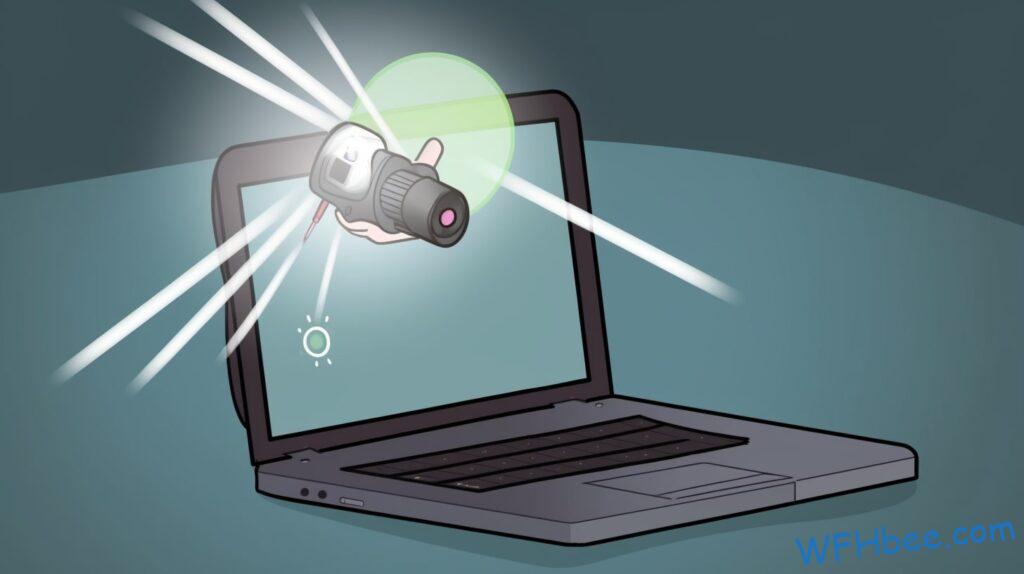
Practical Solutions To Worry About Being Monitored At Home
Employee privacy protection is an important aspect of a safe and secure working environment. There are several remote monitoring strategies available to employers that can help protect their employees from being monitored without their knowledge or consent when they work from home. For example, digital security measures such as two-factor authentication and encryption technology can be employed to ensure employee data remains confidential at all times. Additionally, many companies have adopted policies that explicitly state that any form of surveillance on company systems requires prior authorization by the employer before it is allowed.
It’s also important for employees to understand what their rights are in terms of workplace monitoring. Many countries have laws protecting workers’ right to privacy while using company equipment, so it’s important to familiarize yourself with these laws before you start working remotely. Employees should also make sure they know how their employer monitors them, including which software programs or hardware devices may be used for this purpose. Knowing your own rights and understanding the different types of monitoring methods your boss might use will enable you to take steps to prevent intrusive surveillance practices.
Being aware of ways to maintain your privacy is key if you’re concerned about potential invasions into your personal space during work hours. This means keeping sensitive information securely stored away from prying eyes, making sure passwords are changed regularly and avoiding sharing private details over open networks like public Wi-Fi connections. With the proper precautions in place, both employers and employees alike can benefit from more efficient communication and collaboration without sacrificing safety or trustworthiness. Now let’s explore understanding the benefits and consequences of workplace surveillance further.

Understanding The Consequences Of Workplace Surveillance
Employers are increasingly relying on computer monitoring and other forms of surveillance in order to ensure that their remote workers are productive and efficient. While this can provide certain benefits for employers, it is important for both sides to understand the potential consequences before engaging in such practices.
Employer surveillance offers some advantages when it comes to improving employee productivity and performance. With real-time monitoring, supervisors have access to data about how long tasks take, which helps them better manage teams and assign responsibilities more efficiently. Additionally, tracking systems can help identify areas where processes need improvement or where training may be necessary. Knowing these details allows employers to make timely decisions that result in improved organizational outcomes.
However, there are also drawbacks associated with employer surveillance. Despite its usefulness in gauging employee performance and efficiency, it can lead to feelings of mistrust between staff members and management if not handled properly. Additionally, many countries have laws regulating workplace monitoring that must be followed closely by companies operating within those legal boundaries; failure to do so could lead to additional costs stemming from fines or lawsuits brought against the company itself.
Ultimately, understanding all aspects related to employer surveillance—from how it’s used legally and ethically through its impact on morale—is essential for everyone involved. Employees should familiarize themselves with their rights under local and national laws regarding workplace privacy as well as what their organizations’ policies say about monitoring activities at home or in the office. Similarly, employers would do well to stay informed about relevant regulations around employee monitoring while ensuring fair treatment of their workforce regardless of location. Resources exist for learning more about employee monitoring laws and regulations that businesses can use when considering implementing a system like this one into their operations strategy.

Learning More About Employee Monitoring Laws And Regulations
Employees should be aware of their rights in the digital age when it comes to employee monitoring. Knowing your local employee laws and regulations can help protect yourself from unwarranted surveillance. Federal and state governments have enacted a number of legal protections to guard against employers’ abusive practices involving work-related use of computers, networks, email systems, and other technology resources.
It is important to research specific workplace policies that apply to electronic surveillance or monitoring taking place at your job site. In many cases, the law requires employers to provide notice about any type of monitoring they may be doing on employees’ computer activities or communications. Understand what information you are allowed (or not allowed) to share with colleagues or friends via company social media accounts.
Knowing your rights helps ensure that you don’t feel like an unwelcome intruder into someone else’s home while working remotely. Check out online resources such as federal labor law websites for more detailed information about relevant rules governing employee privacy issues in the digital age. It’s also wise to consult with a lawyer if questions arise concerning potential violations of laws protecting employee privacy rights in your particular situation. Take steps now so that no one can watch you without permission during work hours!

Protecting Yourself In The Digital Age
With the rise of remote working, digital security and online privacy have become increasingly important. It is essential that you understand how to protect yourself in the cyber world as much as it is essential for your work. This means being aware of risks such as having your laptop camera monitored by an employer or other malicious actors. Fortunately, there are a number of steps you can take to help ensure your safety when using devices connected to the internet.
First, make sure all of your devices are up-to-date with their software updates so they don’t contain any potential vulnerabilities that could be exploited. Install antivirus and anti-malware programs to keep your data safe from viruses, ransomware, Trojans, and other threats. Additionally, use strong passwords on all accounts and enable two-factor authentication where possible. That way if someone gains access to one account they won’t be able to log into others without receiving additional verification codes sent via email or text message.
Furthermore, consider investing in a VPN (Virtual Private Network) service which allows you to browse securely and completely anonymously even over public Wi-Fi networks – perfect for those who frequently travel for business trips or coffee shop meetings! You should also practice good internet hygiene by avoiding clicking on suspicious links or downloading unknown files that may carry malware or spyware. By following these simple tips and learning more about digital security best practices, you will be well equipped with the knowledge needed to stay secure in today’s digital age.

Final Words
In conclusion, it is important to understand the complexities of employer surveillance, both in terms of legality and practical implications. It can be a difficult line to draw between privacy rights and legitimate business interests when employers choose to monitor their employees at home, but there are ways that you can protect yourself while still fulfilling your job duties.
By being aware of company policies on employee monitoring, understanding what types of technology may be used for this purpose, and knowing your rights as an employee, you can navigate the potential risks associated with workplace surveillance without sacrificing too much of your own privacy.
Ultimately, by taking these precautions, you can ensure that you remain productive and secure in any work environment.
Author: Robin Borg
Hi, I’m Robin. I have been working from home at least one day a week during all of my adult life. I have a background in research and data science. Get to know me better in the About page.

